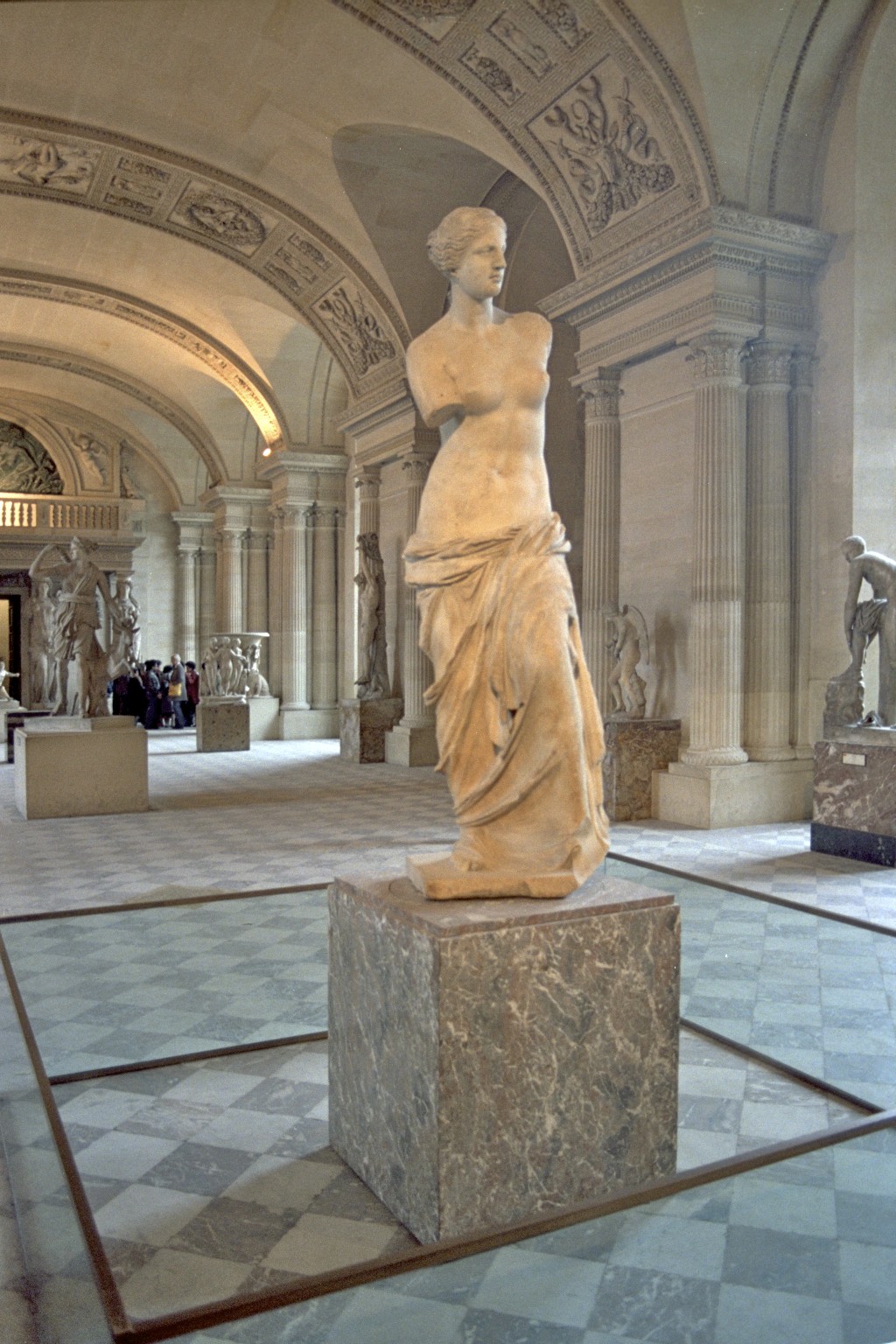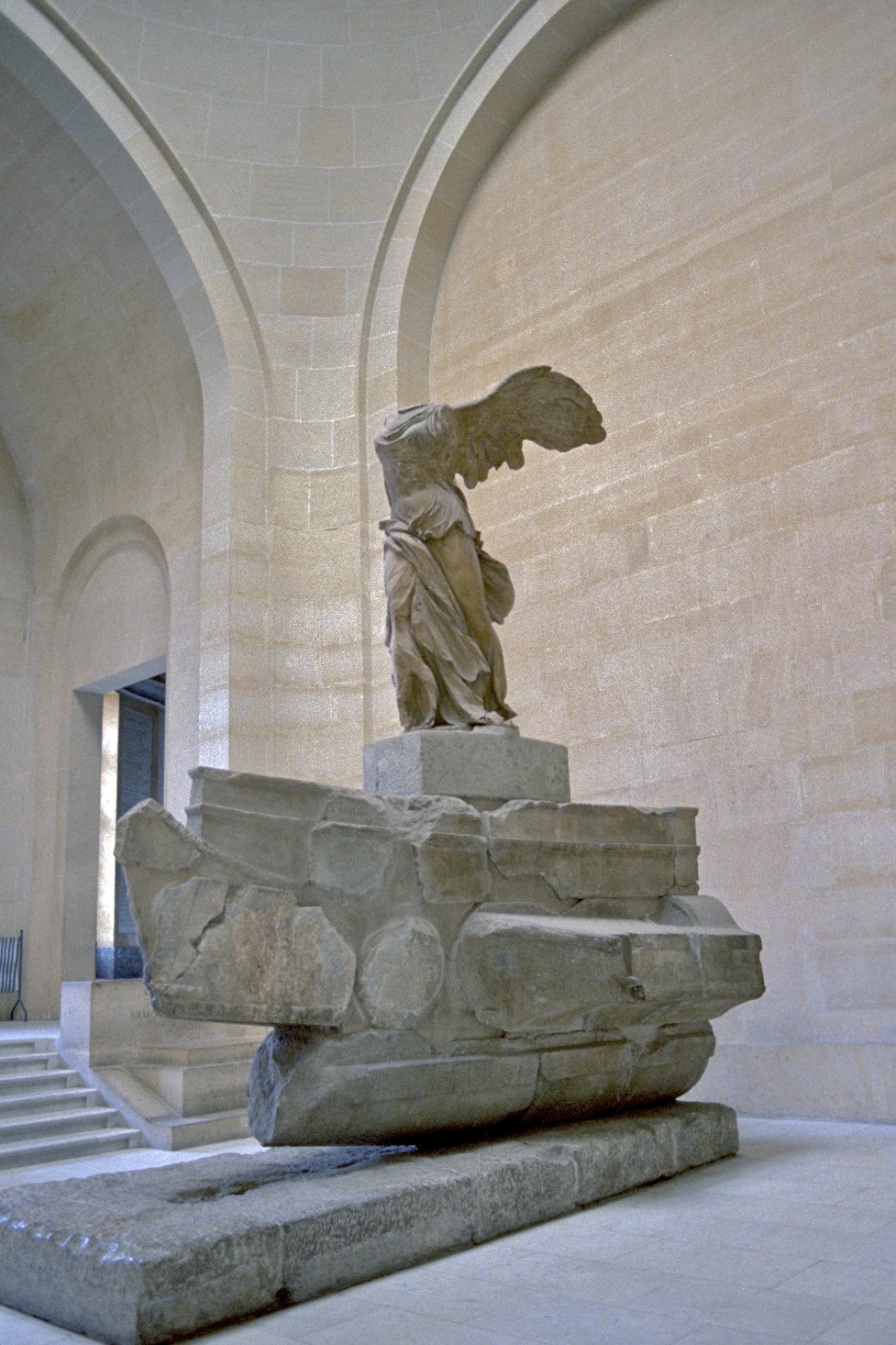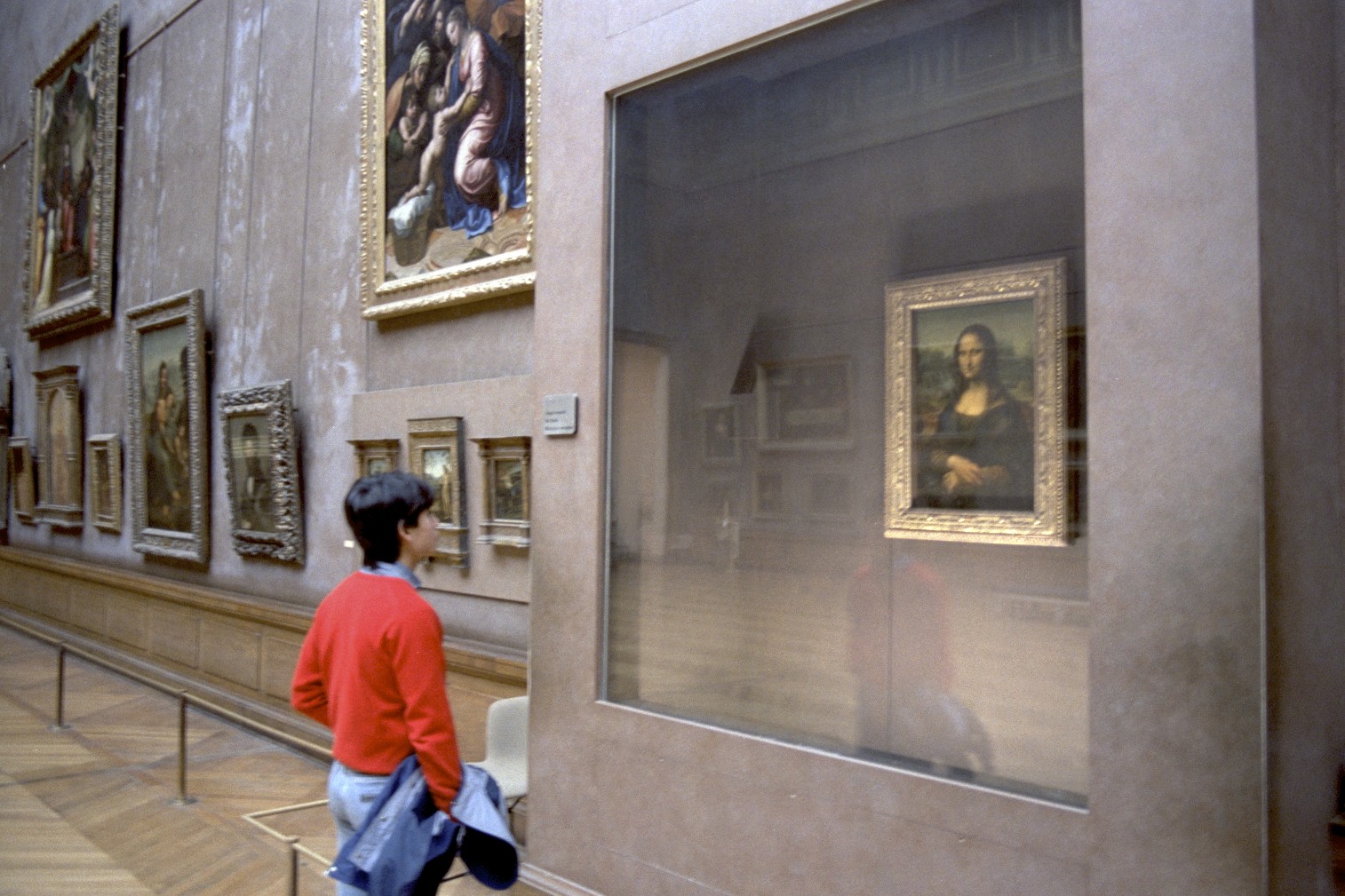Museum de Louvre
We enter the museum itself, through the Pyramide.

Louvre: Venus frá Milo
This is with the National Gallery in London one of the two greatest museums of art in the world. The second row is reserved for the Uffizi in Florence, Prado in Madrid and the Museum of Modern Art in Manhattan. It is estimated that there are now about 500,000 objects owned by the museum. It will take three months to inspect the exhibits by spending 30 seconds on each item.
Most French kings collected works of art, all the way back to Francis I who owned works by Titian, Rafaelo and Leonardo da Vinci, including the Mona Lisa. Formally the palace was converted into a museum in 1793, shortly after the great Revolution.
From the underground entrance corridors lead to different wings of the museum. Some of the most interesting works are on the ground and first floors of the southern Denon wing.
Mona Lisa
We go into the Denon wing.

Louvre: Samothrake
If we go directly into Salle Daru and then turn left we should find Mona Lisa by Leonardo behind security glass. This southern wing has many exhibition halls. We can se works by the Italians Angelico, Mantegna, Tintoretto, Titian and Veronese; the French Rigaud, Delacroix, David and Géricault; the Benelux van Eyck, Breugel and Rembrandt; and the English Gainsborough and Constable.
We go down the stairs past the Hellenistic 3rd C. B.C. Goddess of Victory from Samothrace. On the left is the Caryatides hall. In its middle stands the famous sculpture from the 2nd C. B.C, Venus from Milo. In this western corner of the floor there are Greek and Roman antiques. Egyptian antiques are in the southern corner and Middle Eastern ones in the other half.
Among famous items in the Louvre is the Egyptian Scribe and the bust of Amenofis IV, the statue of King Gudea and the Laws of Hammurabi. The museum is divided into three sections of antiques, according to geographic areas, and sections of painting, sculpture and applied arts. It is wise to buy a special guide-book for the museum, but the position of works can be changed.


